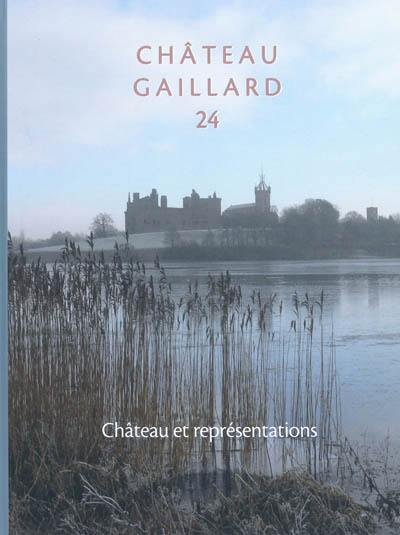
Fiche technique
Format : Relié
Nb de pages : 276 pages
Poids : 1230 g
Dimensions : 22cm X 28cm
ISBN : 978-2-902685-77-6
EAN : 9782902685776
Château et représentations
actes du Colloque international de Stirling (Ecosse), 30 août-5 septembre 2008
Quatrième de couverture
Château Gaillard 24
L'image du château a été l'objet, en 2008, du 24e colloque Château Gaillard, lequel a abordé des thématiques très variées : cette image peut en effet aussi bien s'exprimer dans les sources iconographiques ou littéraires qu'être remise au jour par des fouilles archéologiques. Le croisement de ces points de vue amène naturellement à s'interroger sur la part de fantaisie dont peut faire preuve un enlumineur, sur la part de symbolique ou de fantastique que comporte la description des forteresses des récits littéraires, ou encore sur l'influence des légendes lors de la restauration de certains sites... Des exemples dans toute l'Europe et, au-delà, dans les États latins d'Orient portent le regard, tantôt vers l'extérieur, tantôt vers l'intérieur du château, tant sur l'image que souhaitent donner ses occupants que sur la vue dont ils veulent jouir.
L'image du château, c'est aussi sa fonction. Les médiévistes savent que les châteaux ne sont pas que des forteresses militaires, mais le débat reste vif quant à déterminer si une fonction surpasse l'autre : le château est-il avant tout une résidence noble qui facilite la transmission du pouvoir ? La question conduit bien entendu à revenir sur la typologie des châteaux, que les découvertes récentes enrichissent toujours un peu plus.
Château Gaillard 24
The image of the castle, as seen in its numerous and varied facets, was the central theme of the 24th Chateau Gaillard colloquium held in 2008. The image can as easily find its expression through documents or iconographic sources as it can be found in the results of archaeological excavation. The meeting of these points of view naturally raises questions of as to the part of fantasy that an illuminator has recourse to, the role of symbolism or the fantastical that are encompassed in descriptions of fortresses or literary tales, or even the influence of legends on the restoration of certain sites. Examples from across Europe and beyond, as far as the Latin East, draw attention to the castles' exteriors and interiors, to the image of the castle that the inhabitants wish to project and to the external views that they wish to enjoy.
The image of the castle is also its function. Medievalists know that castles are not just military fortresses, but the debate remains open as to whether one function dominates another : is the castle first and formost a lordly residence that facilitates the exercise of power ? The question necessarily involves re-evaluating castle typology, slowly but surely informed by recent discoveries.
Château Gaillard 24
Die 24. Château-Gaillard-Tagung war dem Bild der Burg gewidmet und näherte sich diesem Thema von sehr unterschiedlichen Seiten her. Dieses Bild kann sowohl aus literarischen oder ikonographischen Quellen hervorgehen, aber auch auf den Ergebnissen archäologischer Ausgrabungen basieren. Die Gegenüberstellung all dieser Quellen erfordert es, zu fragen, wieviel Fantasie in den Bildern eines Miniaturmalers, wieviel Symbolisches oder Phantastisches in den Burgbeschreibungen der Erzählliteratur steckt, oder inwieweit sich Sagen auf die Rekonstruktion mancher Anlagen ausgewirkt haben. In Beispielen aus ganz Europas und den Kreuzfahrerstaaten wird der Blick mal auf das Innere, mal auf das Äußere der Burg gerichtet - darauf, wie die Herren der Burg ihre Burg darstellen wollten und auf die Aussicht, die sie genießen wollten.
Zum Bild der Burg gehört auch die Frage nach ihrer Funktion. Den Mediävisten ist wohlbekannt, das die Burgen keine reinen Wehrbauten waren, aber noch immer wird heiß diskutiert, ob die folgende Funktion dominierte : War die Burg vor allem ein adliger Wohnsitz, der der Machtsicherung diente ? Diese Frage steht in unmittelbarem Zusammenhang mit der Typologie der Burgen, die sich aufgrund neuer Entdeckungen immer noch verfeinern lässt.





